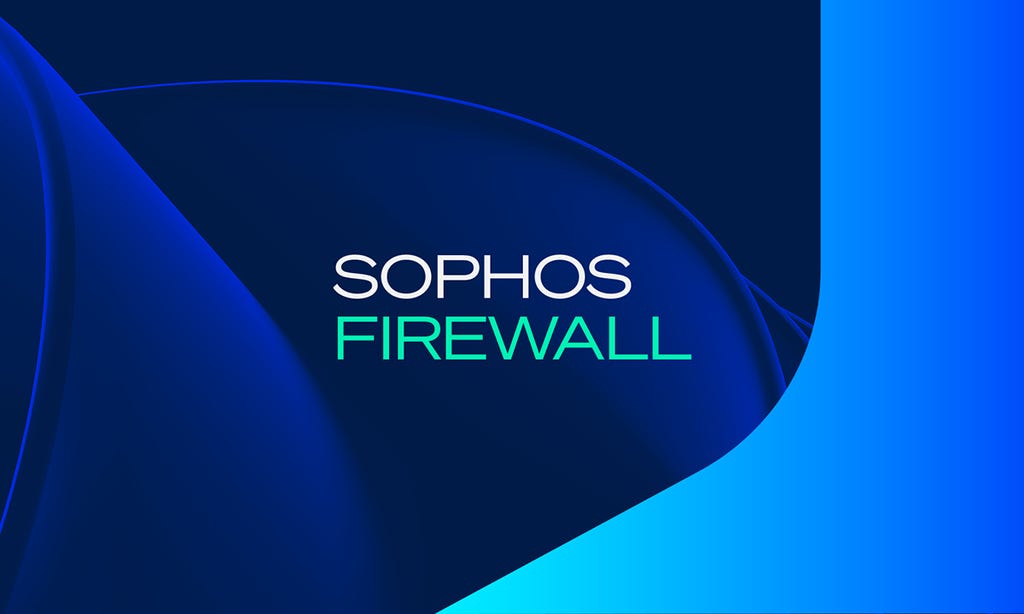
What is secure access service edge (SASE)?
Secure Access Service Edge, more commonly known as SASE (pronounced “Sassy”), is the next iteration of cybersecurity in the cloud. Chances are, you’re already leveraging some elements of SASE, such as Zero Trust or a Software-Defined Wide Area Network (SD-WAN) in your environment. SASE is quickly gaining traction due to its cloud-first approach to architectural framework. There’s a reason SASE adoption increased by 33% in 2022, and the market is expected to generate $9 Billion in revenue by the end of 2023. Read on to learn more about why Secure Access Service Edge (SASE) is the modern security approach that best supports today’s way of working.
About SASE
SASE is a network architecture framework that combines network security and software-defined wide-area networking (SD-WAN) capabilities into a single, cloud-based service. The concept of SASE, a term coined by Gartner in 2019, is a response to the changing landscape of enterprise networks in which traditional data centers are becoming less prevalent. Cloud-based applications and services are the default infrastructure. A SASE framework focuses on consolidating multiple networking and security functions, all while securing them in a singular, integrated cloud service.
Why Is SASE Growing in Popularity?
SASE is the right architecture for the modern workforce. Traditional approaches to enterprise networks and technologies can’t provide the layers of security and access control that today’s digital organizations require. Your users need uninterrupted, secure access to applications, systems, and data, regardless of where they’re located.
SASE is growing in popularity because it delivers a more flexible way to execute advanced security inspections directly in the cloud environment, as opposed to the previous method of backhauling application traffic to a data center before forwarding it on to the cloud. The “old” way of inspecting traffic in the data center causes latency and can slow your workforce down.
With SASE, enterprises can enjoy safe, efficient access to critical network assets. They can identify and mitigate cyber threats, scale network protection as your organization grows, and apply security controls via a simple interface.
How does SASE work?
Traditional approaches to cloud cybersecurity revolve around Virtual Private Networks (VPNs), firewalls, SSL/TLS encryption, malware, virus detection, and cloud brokering services for web applications. SASE brings all of these features together in one consolidated platform. SD-WAN creates a single brokering fabric that is controlled by a centralized control console. Firewalls, cloud brokerage, and other critical security tasks combine in a single service accessible from the network edge.
The SASE architecture brings these cybersecurity functions under one control plane leveraging the following:
- SD-WAN. SASE uses SD-WAN service with a private backbone to avoid latency issues from the public internet. This backbone connects to individual POPs used for security and networking software. As a result, your network traffic rarely touches the internet and only connects with the global SASE backbone of your SD-WAN provider, making it more secure. SD-WAN simplifies management and operation of a WAN by abstracting its underlying network infrastructure. SD-WAN optimizes your network’s performance by dynamically routing network traffic over various connection types (MPLS, broadband, or LTE) based on your application requirements and network conditions.
- Cloud-based inspection and security policy enforcement. SASE does more than securely connect devices; it also protects them. SASE has the ability to inspect your network traffic for any unusual network behaviors using a multitude of inspection engines. The inspection happens within the secure cloud instead of at the data center, reducing network latency and boosting application availability. SASE provides other services as well, such as domain name system-based protection and distributed denial-of-service protection. Regulations, such as the General Data Protection Regulation (GDPR), should be enforceable in the SASE's routing and security policies.
- Security Services. SASE incorporates various security services, including, but not limited to, secure web gateways, firewalls, anti-malware, intrusion detection and prevention, data loss prevention (DLP), and CASB.
- Zero-Trust Network Access (ZTNA). ZTNA is a security model that requires all users and devices to be authenticated and authorized before accessing any network resources, regardless of their location.
- Cloud-Native Architecture. SASE services are delivered through cloud-native architecture, enabling scalability, flexibility, and rapid deployment.
What are key benefits of adopting SASE?
The SASE approach is purpose-built for today's cloud-dependent companies and offers many benefits and advantages to your organization, including:
- Enhanced Security: SASE's comprehensive security services provide protection against a wide range of cyber threats and attacks, regardless of the user's location.
- Simplified Network Management: The integration of networking and security functions into a single platform reduces complexity and simplifies network management.
- Improved Network Performance: SD-WAN optimizes network traffic routing, ensuring that applications perform well even over long distances.
- Flexibility and Scalability: SASE's cloud-native architecture allows organizations to scale resources based on demand and adapt to changing business needs.
- Reduced Costs: By eliminating the need for multiple hardware appliances and on-premises infrastructure, SASE can significantly reduce capital and operational expenses.
Remote Workforce Security
With the rise of remote work and the increasing use of mobile devices, traditional security measures centered around a corporate perimeter are no longer sufficient. SASE, with its cloud-delivered security services, provides the following benefits for remote work and mobile workforce security:
- Secure Access: SASE allows employees to access corporate resources securely, regardless of their location or the device they are using. It enforces strong authentication and authorization measures through the ZTNA model.
- Data Protection: SASE includes data loss prevention (DLP) capabilities to prevent sensitive data from being leaked or accessed by unauthorized users.
- Threat Protection: The integration of multiple security services provides a robust defense against various cyber threats, ensuring that remote workers and their devices are protected from malware, phishing attacks, and other security risks.
- Performance Optimization: SD-WAN enhances application performance by optimizing traffic routing, reducing latency, and providing a better user experience for remote employees.
Security Integration
SASE is designed to be compatible with other security solutions, and organizations can choose to retain certain on-premises security components while gradually transitioning to the cloud-based SASE model.
This hybrid approach allows organizations to make a smooth migration to SASE without disrupting their existing operations or investments in security infrastructure.
Business Size and Needs
While SASE is often associated with large enterprises due to its robust capabilities and scalability, it can benefit organizations of all sizes. Small and medium-sized businesses can take advantage of SASE's simplicity, cost-effectiveness, and flexibility, making it a suitable solution for them as well.
How Can I Prepare My Organization for Adopting SASE?
Preparing your organization for adopting Secure Access Service Edge (SASE) involves several steps to ensure a smooth and successful transition. SASE is a network architecture that combines network security functions with wide-area networking capabilities, aiming to provide secure access to applications and data for remote and mobile users. Here are some steps to help you prepare for adopting SASE:
- Understand SASE Concepts: Start by gaining a thorough understanding of SASE and its core concepts. Familiarize yourself with the key components, such as SD-WAN (Software-Defined Wide Area Network) and security services (firewall, secure web gateway, CASB, etc.) integrated into a single cloud-based solution.
- Assess Your Current Infrastructure: Evaluate your organization's existing network infrastructure and security setup. Identify any weaknesses or inefficiencies that SASE could address. This assessment will help you understand your specific needs and requirements.
- Define Your Objectives: Clearly outline the objectives you want to achieve with SASE adoption. Common goals include improved security, enhanced user experience, simplified network management, and cost optimization.
- Engage Stakeholders: Involve all relevant stakeholders, including IT teams, security teams, business leaders, and end-users, in the decision-making process. Understand their needs and concerns and address them to ensure their support during the adoption.
- Create a Roadmap: Develop a comprehensive implementation roadmap that outlines the steps required to deploy SASE in your organization. This roadmap should include timelines, milestones, resource allocation, and clear responsibilities.
- Pilot Test: Before implementing SASE across your entire organization, conduct a pilot test in a controlled environment. This will allow you to identify and address any potential issues or challenges before a full-scale deployment.
- Address Security and Compliance: Ensure that the SASE solution you choose meets the security and compliance requirements of your organization and industry. Data protection, encryption, access controls, and compliance with relevant regulations are crucial aspects to consider.
- Monitor and Optimize: Implement monitoring and reporting mechanisms to continuously assess the performance and security of your SASE deployment. Regularly review the system to optimize its performance and make any necessary adjustments.
- Gradual Rollout: Consider a gradual rollout approach, especially for larger organizations. This allows you to implement SASE in stages, enabling you to learn from each phase and make improvements as you progress.
By following these steps, you can prepare your organization for adopting SASE effectively, ensuring a more secure and efficient network infrastructure.
What considerations should be made when selecting a SASE provider?
Research and choose a reputable and reliable SASE provider that aligns with your organization's needs and goals. Consider factors like security capabilities, performance, scalability, support, and compliance with industry regulations.
When selecting a SASE provider, consider the following factors:
- Security expertise: Ensure that the provider has a strong security track record and offers a comprehensive range of security services.
- Performance and reliability: Look for a provider that can guarantee high availability and performance, with data centers distributed globally for optimal connectivity.
- Scalability: Choose a provider that can scale its services to meet your organization's growing needs.
- Compliance and regulations: Ensure that the provider complies with relevant industry standards and regulations to maintain data privacy and security.
- Integration with existing infrastructure: Evaluate how well the SASE solution can integrate with your organization's existing network and security infrastructure.
Sophos SASE Solutions
Sophos SASE is designed from the start to simplify your cybersecurity world. We believe that a successful SASE strategy must deliver on three important goals:
- Connect Anywhere: Through the Sophos Secure Access Portfolio, connect your hybrid network anywhere, anyhow – securely, easily, and economically.
- Unified Security Policy: Set your security policy once and enforce it everywhere – on-premise, in the cloud, or on the user’s Zero Trust device.
- Powerful Security Services: Sophos SASE combines our best data protection technologies: deeply integrated, predictive, automated and extended threat detection and response to protect users, identities, devices, data, workloads, and infrastructure.
Are you ready to take the next step on SASE?
Related security topic: What is attack surface management?
.svg?width=185&quality=80&format=auto&cache=true&immutable=true&cache-control=max-age%3D31536000)


.svg?width=13&quality=80&format=auto&cache=true&immutable=true&cache-control=max-age%3D31536000)



